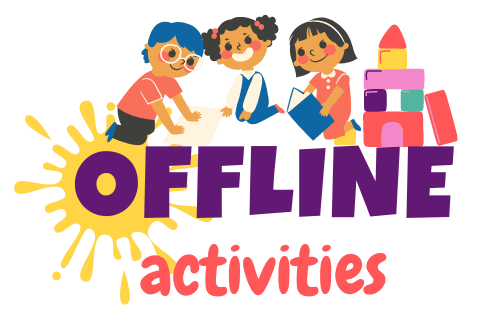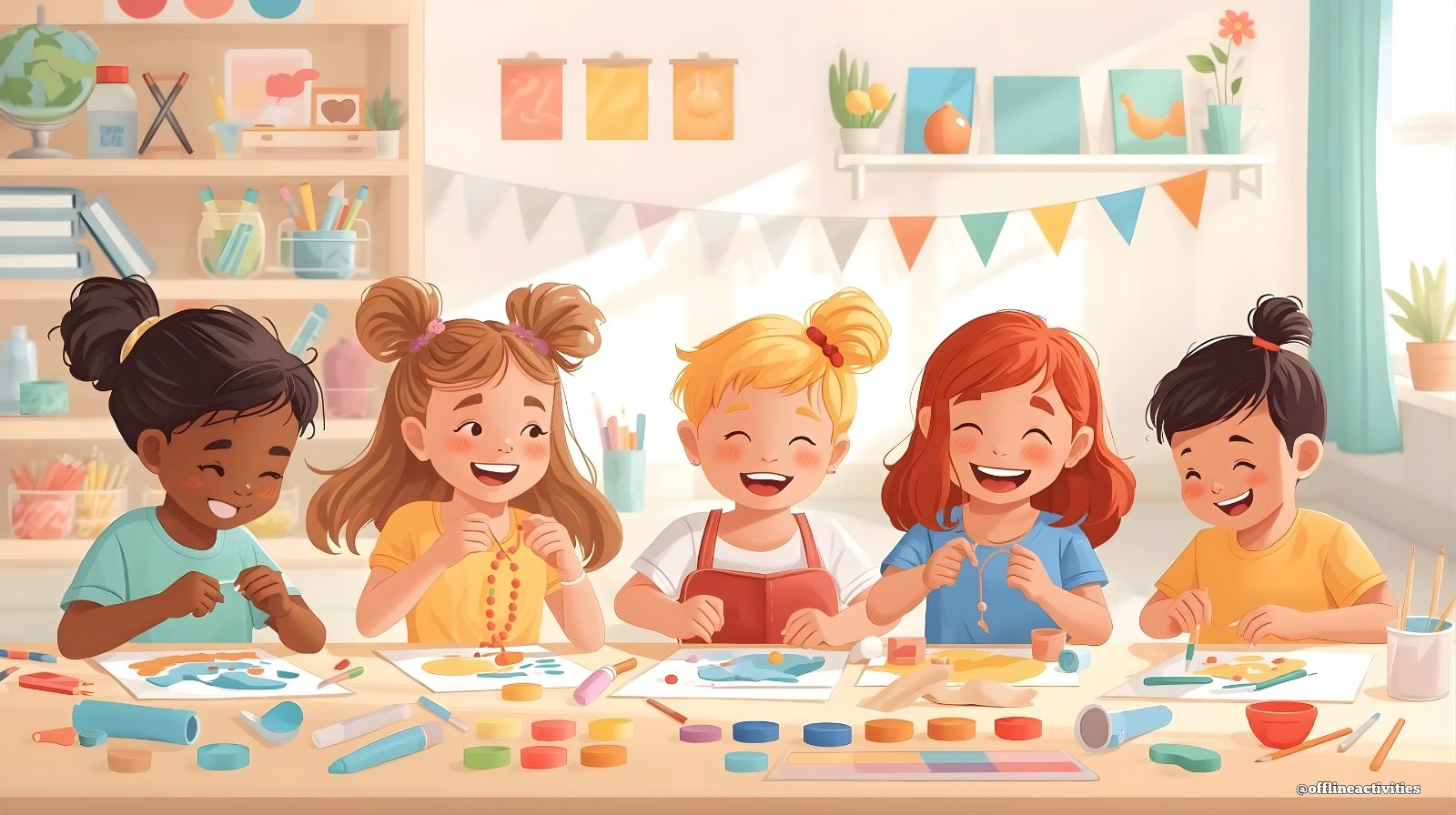In a world buzzing with digital distractions, crafts offer children something truly magical — the chance to create with their hands, think with their hearts, and learn through play. Whether your child is stringing beads, cutting paper shapes, or molding clay, these simple, screen-free activities nurture vital developmental skills while igniting creativity.
As an educator and parent, you’ll love how easy crafts transform restless energy into focused exploration. You don’t need expensive materials — just basic supplies, a bit of imagination, and the willingness to let your child experiment freely. Through crafts, kids strengthen fine and gross motor skills, learn patience, and discover the joy of hands-on learning.
So, roll up your sleeves — it’s time to explore how crafting can build sharper minds, stronger hands, and calmer hearts.
💡 Quick Take: Why Crafts Matter
-
✋ Develop fine and gross motor coordination.
-
🧠 Strengthen focus, attention span, and planning.
-
❤️ Boost emotional regulation and confidence.
-
👩🎨 Encourage creativity, problem-solving, and patience.
-
🌿 Provide a mindful, screen-free environment for learning.
🎨 Step-by-Step Craft Guide: Hands in Action
1. Materials You’ll Need
| Material | Purpose | Recommended Product (Affiliate) |
|---|---|---|
| ✂️ Child-safe scissors | Strengthens hand muscles | Fiskars Kids Scissors |
| 🎨 Non-toxic paints | Sensory + fine motor activity | Crayola Washable Paint Set |
| 🧵 Yarn or string | Threading and coordination | Melissa & Doug Lacing Set |
| 🧩 Cardboard / paper | Base for projects | EcoKids Craft Pack |
| 🖍️ Crayons & markers | Grip and control | Crayola Jumbo Crayons |
(Note: Some links are affiliate links. If you purchase through them, we may earn a small commission at no extra cost to you.)
2. Craft Activity 1: Clay Creatures (Fine + Gross Motor Play)
Step-by-Step:
-
Give your child a lump of soft clay or playdough.
-
Encourage them to roll, flatten, pinch, and shape — animals, monsters, or favorite foods.
-
Add buttons, sticks, or beads for details.
-
Let creations air dry, then paint together!
Educational Value:
-
Enhances grip strength and dexterity.
-
Stimulates imagination and spatial awareness.
-
Encourages patience and attention to detail.
Variation:
For preschoolers, use larger molds and plastic tools. For kindergarteners, challenge them to build mini clay habitats.
3. Craft Activity 2: Bead Threading Bracelets (Focus & Coordination)
How to Do It:
-
Provide colorful beads and thick string or pipe cleaners.
-
Demonstrate threading and knotting.
-
Let kids create bracelets for family or friends.
Tip: Add counting — “How many blue beads will you use?” — to integrate early math skills.
Skills Developed:
-
Fine motor precision and hand-eye coordination.
-
Mathematical thinking and pattern recognition.
-
Emotional connection through gift-making.
4. Craft Activity 3: Big Brush Painting (Focus & Body Awareness)
Step-by-Step:
-
Set up large paper sheets on a wall or floor.
-
Give your child big brushes or sponge rollers.
-
Let them paint with full-arm movements — rainbows, waves, or abstract splashes.
Benefits:
-
Builds gross motor control and balance.
-
Reduces stress and improves mindful focus.
-
Great sensory outlet for energetic kids!
5. Craft Activity 4: Paper Cutting Collage (Creativity Meets Control)
Steps:
-
Gather magazines, colored paper, and glue sticks.
-
Let children cut shapes and images that inspire them.
-
Encourage them to create themed collages — “My Dream Garden” or “Under the Sea.”
Tip for Teachers:
Use this in classrooms to reinforce themes in science or storytelling lessons.
🧠 Educational Value: The Science Behind Crafting
Crafting is more than fun — it’s brain-building. According to Harvard’s Center on the Developing Child, fine motor and sensory-rich activities directly support neural growth in early years. Montessori educators echo this: “Hands lead the mind.”
Skills Developed:
-
Fine Motor Control: Cutting, coloring, and gluing build writing readiness.
-
Focus & Patience: Step-based tasks improve sustained attention.
-
Creativity & Problem Solving: Children learn to imagine, plan, and adapt.
-
Emotional Regulation: Crafts create calm, mindful engagement that reduces stress.
Statistic: Research shows that hands-on activities improve memory retention by 25% compared to passive learning.
📊 Comparison Table
| Aspect | Craft Learning | Screen Learning |
|---|---|---|
| Sensory engagement | High (touch, sight, motion) | Low |
| Motor skill use | Active (fine + gross) | Minimal |
| Emotional benefit | Calming, expressive | Overstimulating |
| Focus building | Gradual and lasting | Short bursts |
| Parent involvement | Interactive | Passive supervision |
🧰 Tools We Recommend
| Product | Why We Love It | Link |
|---|---|---|
| ✂️ Fiskars Kids Scissors | Perfect for small hands, safety-tipped, easy grip | View on Amazon |
| 🎨 Crayola Washable Paints | Bright, non-toxic colors ideal for classrooms | Shop Here |
| 🧵 Melissa & Doug Bead Set | Encourages pattern making and concentration | Check Availability |
| 📦 EcoKids Craft Pack | Recycled materials for eco-friendly crafting | View Product |
❓ FAQs
1. How long do these crafts take?
Most crafts take 20–40 minutes, depending on the child’s age and focus.
2. What if my child loses interest halfway?
Allow natural breaks. Return later and focus on enjoyment, not completion.
3. Can I use recycled materials?
Absolutely! Recycled cardboard, bottle caps, or fabrics spark creativity and teach sustainability.
4. What age group benefits most?
Ages 3–8 gain the most from hands-on fine motor activities, but even older kids enjoy them.
5. How can I make crafts educational?
Link them to literacy (“Draw your favorite story character”) or science (“Create the life cycle of a butterfly”).
🌈 Conclusion
Every brushstroke, bead, and fold is more than play — it’s a building block of growth. Crafts teach focus, patience, and creativity while strengthening the very skills that support lifelong learning. When children create with their hands, they learn with their hearts.
So gather your supplies, turn off the screens, and let imagination take over.
Affiliate Disclaimer:
This post may contain affiliate links. If you purchase through them, we may earn a small commission at no extra cost to you.
YOU MAY ALSO LIKE
How To Encourage Creative Drawing In Young Children
The Educational Benefits of Coloring Pages for Kids
Screen Free Activities For 2 Year Olds
How Printable Games Help Kids Learn

